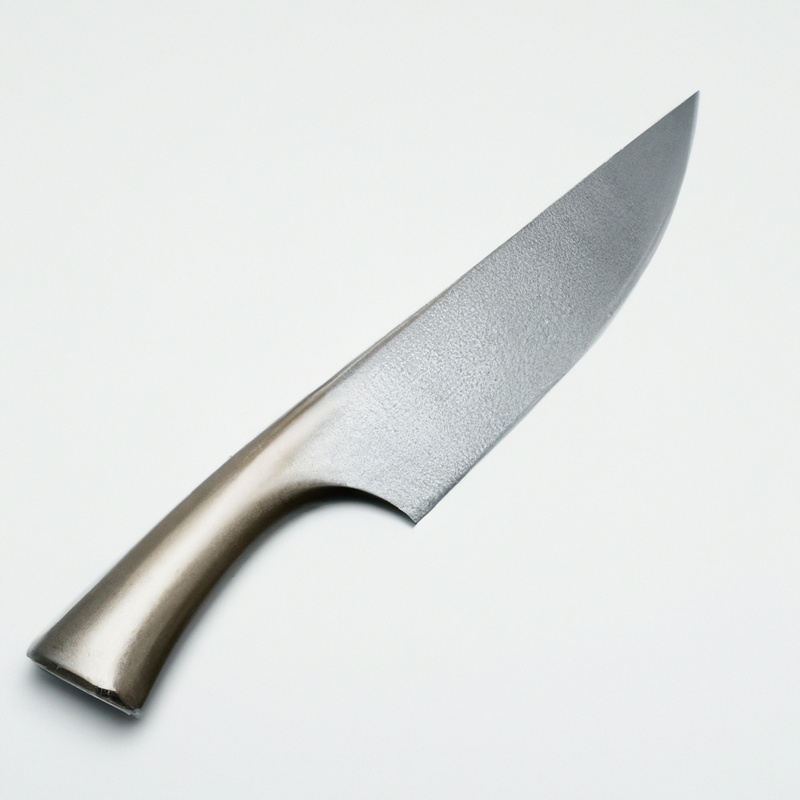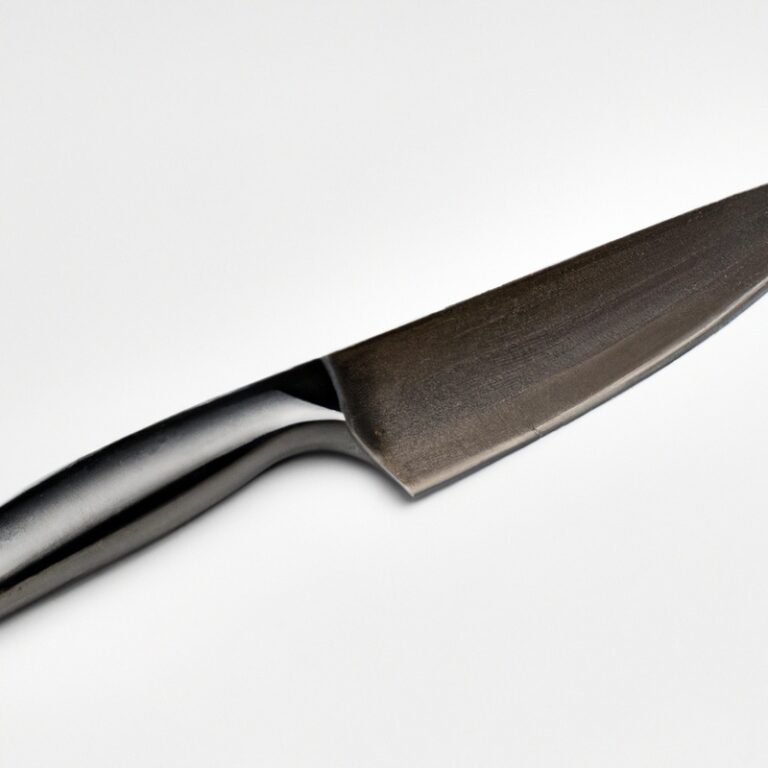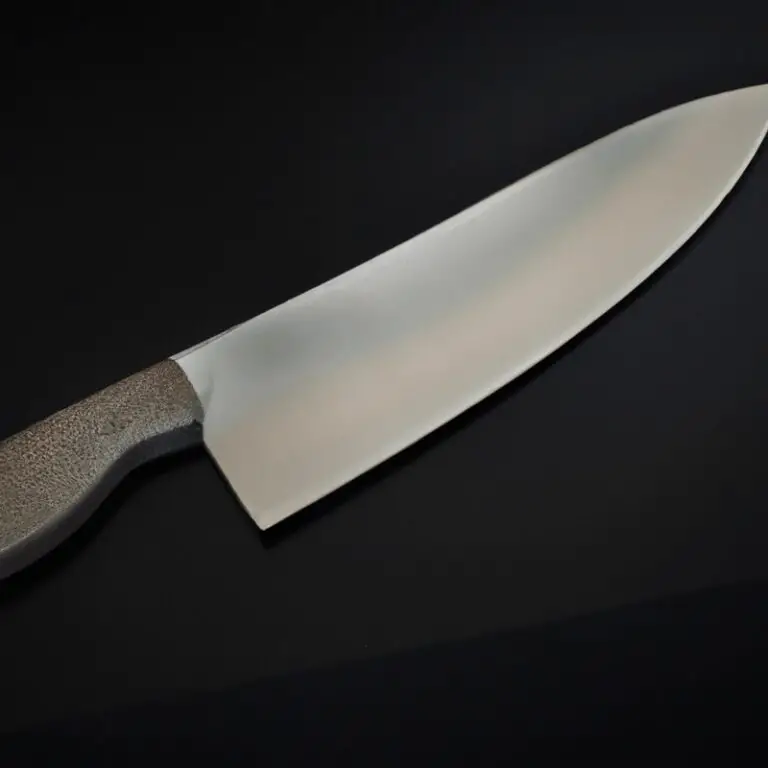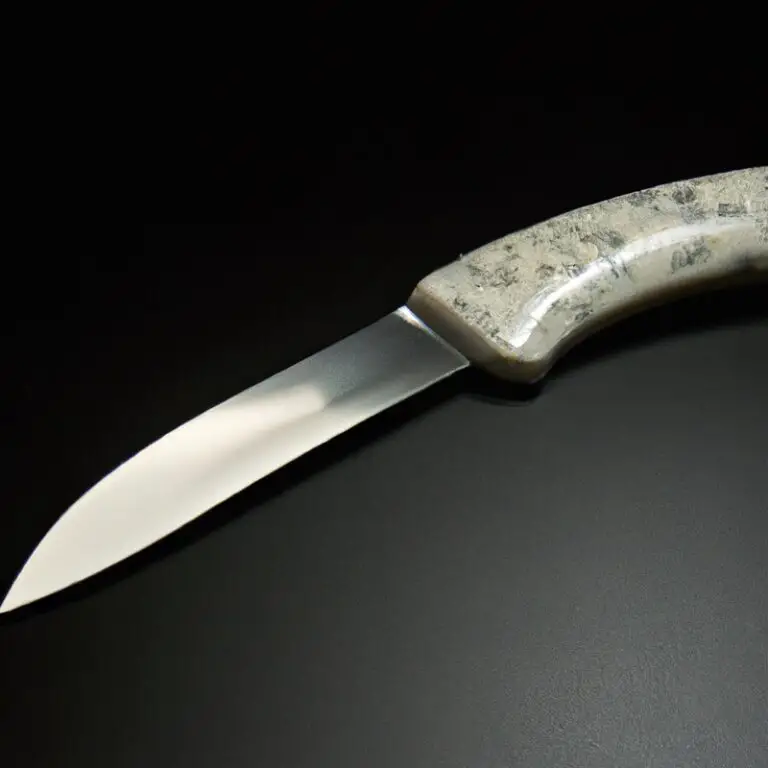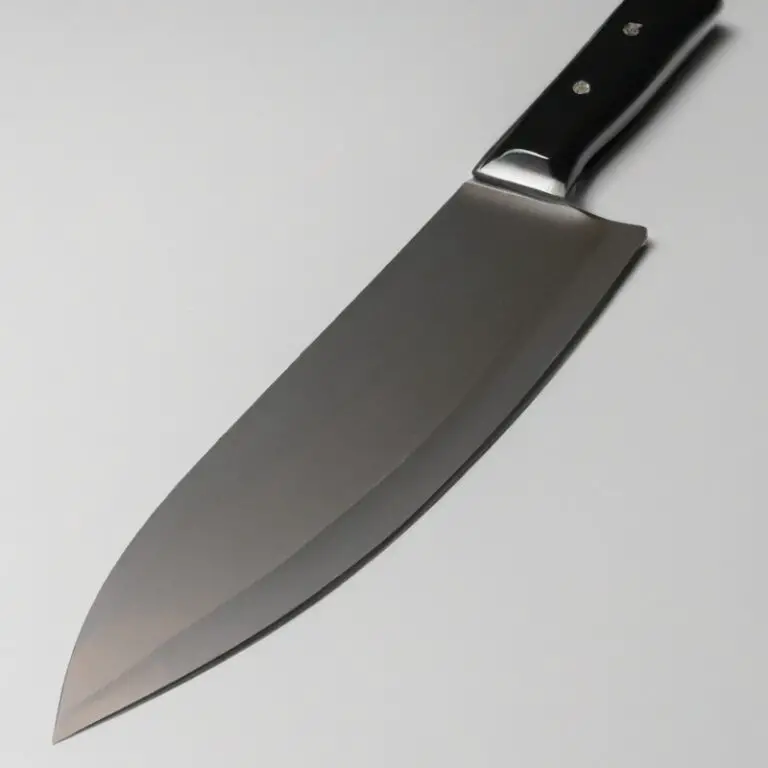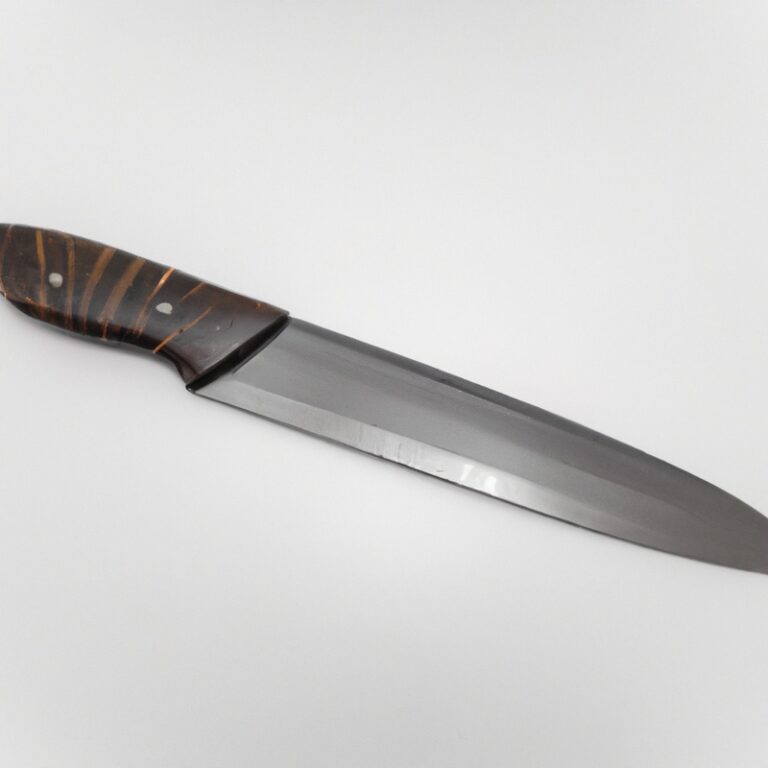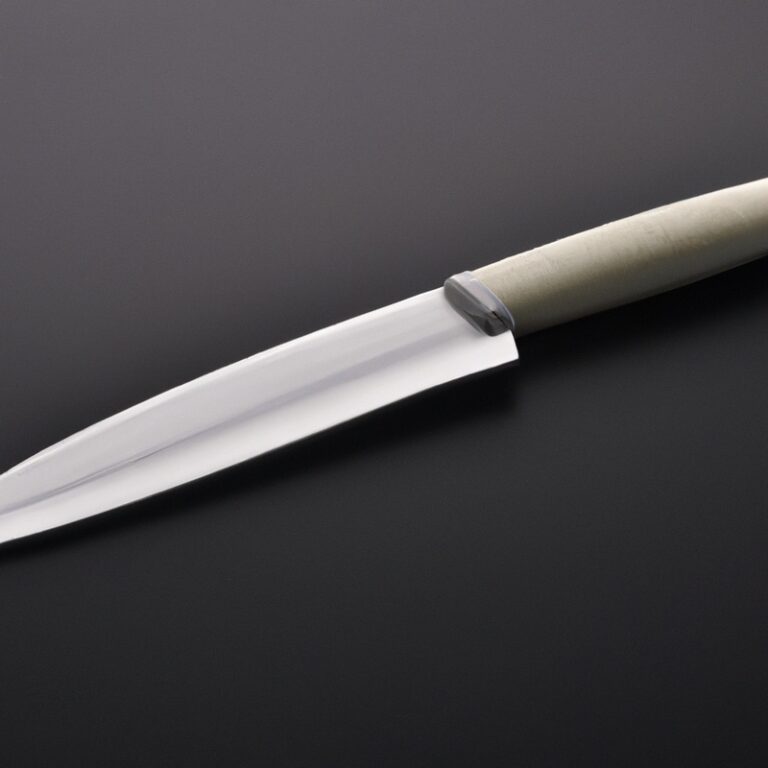What Is The Origin Of The Gyuto Knife? Explained
Key Takeaways:
- The Gyuto knife originated in Japan and is a hybrid of the Western chef’s knife and traditional Japanese knives.
- Its design allows for precision and control when slicing, dicing, and chopping a variety of ingredients.
- Gyuto knives are crafted by skilled artisans using high-quality materials, making them a valuable addition to any kitchen.
- Understanding the history and functionality of the Gyuto knife can help improve your cooking skills and enhance the overall experience of preparing meals.
Are you a fan of Japanese cuisine, or maybe just an avid home cook looking to up your game in the kitchen? Either way, you might have come across the Gyuto knife and wondered about its origins.
This impressive and versatile blade has become a staple in kitchens worldwide, thanks to its unique features and durability.
But where did it all begin? In this post, we will take a deep dive into the history behind one of Japan’s iconic culinary tools.
Get ready to discover the backstory of the Gyuto knife!
| Question | Answer |
|---|---|
| What is a Gyuto knife? | A Japanese chef’s knife used for slicing, chopping, and dicing a variety of ingredients. |
| Where does the word “Gyuto” come from? | It means “beef sword” in Japanese. |
| What is the origin of the Gyuto knife? | The Gyuto knife originated in Japan in the early 20th century as a response to the Westernization of Japanese cuisine. |
| How is a Gyuto knife different from a Western chef’s knife? | A Gyuto knife has a thinner blade and sharper edge, making it more suitable for precise cuts and delicate ingredients. |
| What are some common uses for a Gyuto knife? | Slicing, dicing, and chopping vegetables, fruits, meats, and fish. |
| What are some popular brands of Gyuto knives? | Shun, Miyabi, Global, and Masamoto are some examples. |
Historical significance of the Gyuto knife in Japanese cuisine
The Gyuto knife has a significant historical importance in Japanese cuisine. Originally developed for chefs in western-style restaurants in Japan, it soon became a popular choice for home cooks and professional chefs alike due to its versatility and precision.
The Gyuto knife, which means “cow sword” in Japanese, was inspired by the Western chef’s knife but has unique design differences that reflect the Japanese culture and craftsmanship.
It is considered a symbol of Japanese culinary art and has gained worldwide recognition for its high-quality performance and durability. Today, the Gyuto knife continues to be an essential tool in Japanese kitchens and is an important part of the country’s culinary tradition.
The similarities and differences between the Gyuto knife and the Western chef’s knife
The Gyuto knife and the Western chef’s knife may appear similar, but they have distinct differences. The main similarity is that both knives are used for cutting, slicing, and chopping in the kitchen.
However, the Gyuto knife, a Japanese-style knife, has a thinner and sharper blade that enables precise cuts and offers better control.
The Western chef’s knife is heavier, has a wider blade, and a pointed tip that is better suited for heavy-duty tasks. The blade of the Gyuto knife is typically made of hard steel, which makes it more durable and longer-lasting than a Western chef’s knife.
Additionally, the handle of a Western chef’s knife is generally made of hard synthetic materials while the Gyuto knife typically has a lightweight wooden handle.
Ultimately, while both knives are versatile and have their unique advantages, the specific use-case depends on the type of food and tasks at hand.
The significance of blade length and width in the Gyuto knife
The blade length and width of a Gyuto knife play a crucial role in its performance and versatility. Generally, the blade length ranges from 210mm to 270mm, making it longer than the standard Western chef knife.
The extended blade length of the Gyuto knife enables it to cut delicate fish and vegetables with a single stroke while minimizing wastage.
Additionally, the length of the Gyuto knife blade allows chefs to slice through large produce such as cabbages, melons, and pumpkins effortlessly. Furthermore, the blade’s width determines the Gyuto knife’s accuracy and balance.
A thicker and wider blade distributes weight uniformly throughout the edge, allowing chefs to control the knife’s handle efficiently.
On the other hand, a thinner blade enables chefs to make precise cuts and slice through meat and vegetables without shredding, perfect for creating thin sashimi and sushi rolls. The width of the blade also dictates how much knuckle clearance the chef will have when chopping, preventing bruising or damage to the knuckles.
The blade length and width of a Gyuto knife have a significant impact on its versatility and usefulness in the kitchen.
A wider and thicker blade is excellent for balance and control, while a thinner and narrower blade is perfect for precise cuts and delicate dishes.
The materials used in making a traditional Gyuto knife
Traditional Gyuto knives are typically made with high-carbon steel or stainless steel. High-carbon steel is a preferred material for its ability to hold a sharp edge while being relatively easy to sharpen.
On the other hand, stainless steel is more resistant to rust and corroding, making it a low-maintenance option.
Some modern Gyuto knives incorporate a combination of both materials to maximize durability and sharpness. The handle of a traditional Gyuto knife is typically made from wood, with magnolia, ebony, and rosewood being popular choices due to their durability and resistance to water damage.
The handle may also feature a bolster made from brass or copper to provide balance and stability.
Overall, the materials used in making a traditional Gyuto knife are carefully selected for their ability to enhance the knife’s cutting performance and longevity.
The role of the blacksmith in the creation of the Gyuto knife
The Gyuto knife is a result of the blacksmith’s skills and dedication to the craft. Every knife undergoes a rigorous process of forging, shaping, heat treating, and finishing to achieve its cutting-edge blade.
The blacksmith’s expertise is crucial in determining the blade’s sharpness, hardness, and durability.
The process of creating a Gyuto knife is meticulous and requires extensive knowledge and experience in metallurgy. The blacksmith’s contribution is significant as they infuse their passion and creativity into each knife, making it a functional work of art.
Overall, without the blacksmith’s skills and expertise, the Gyuto knife would not exist in its current form.
The unique features of the Gyuto knife’s handle design
The handle of a traditional Gyuto knife is designed to be comfortable and easy to grasp. The handle is usually made of wood, such as rosewood or ebony, and is crafted to fit the hand naturally.
The octagonal shape allows for a secure grip, even when wet.
The tang, or portion of the blade that extends into the handle, is often tapered and can be seen on the bottom of the handle. The handle is also secured to the blade with a brass or copper bolster, which provides a visual contrast and protects the hand from sliding onto the blade.
Overall, the handle design of the Gyuto knife enhances user comfort and control.
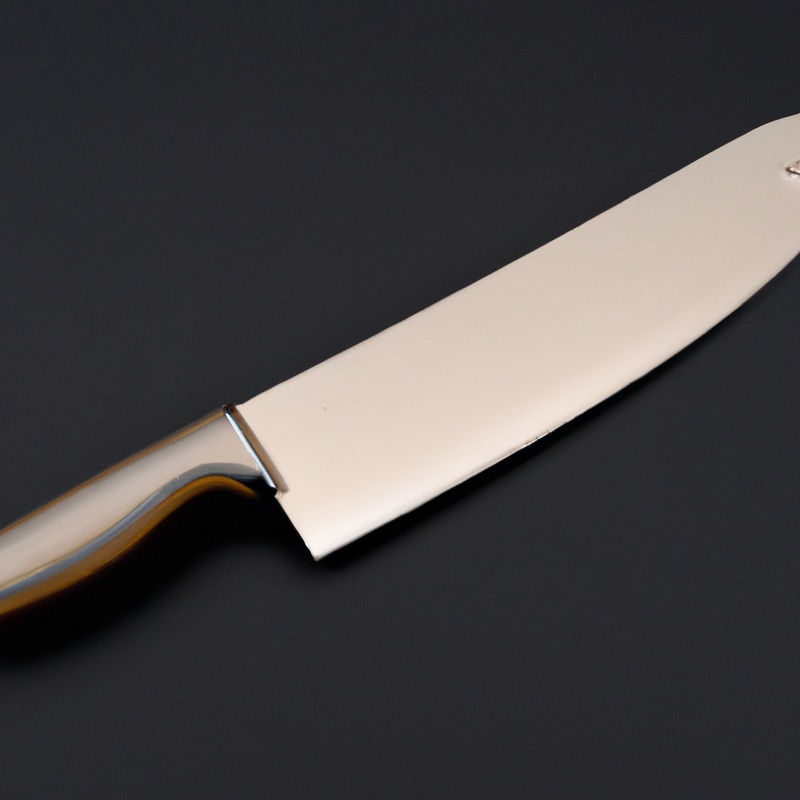
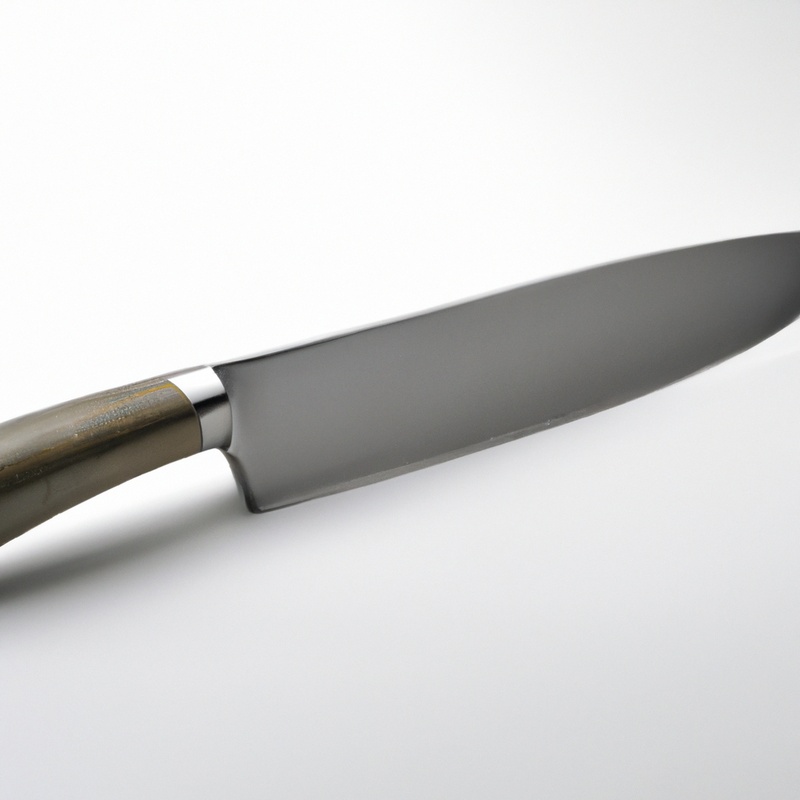
Regions in Japan renowned for producing high-quality Gyuto knives
There are several regions in Japan that are known for producing high-quality Gyuto knives. Among these regions are Seki, Sakai, and Echizen.
These areas are renowned for their rich history in sword-making and cutlery production.
Seki City, Gifu Prefecture, has been producing knives for more than 700 years and is home to some of the most skilled craftsmen in Japan. Seki knives are characterized by their sharpness, durability, and resistance to rust.
Sakai City, Osaka Prefecture, has long been famous for its cutlery production.
Sakai knives are known for their thin blades and razor-sharp edges, making them ideal for delicate work. Echizen, Fukui Prefecture, is another famous cutlery production center that has been crafting knives for over 700 years.
Echizen knives are highly regarded for their strength, durability and sharpness.
In all of these regions, the blacksmiths work with a deep understanding of traditional techniques and use the highest quality materials to create knives that are both beautiful and functional.
The benefits of using a Gyuto knife in the kitchen
The benefits of using a Gyuto knife in the kitchen are numerous. Here are a few:
- Versatility: The Gyuto knife is incredibly versatile and can be used for a variety of kitchen tasks, including slicing, dicing, and chopping. Its thin, sharp blade allows for precision cuts, making it ideal for everything from finely mincing herbs to trimming meat.
- Efficiency: The design of the Gyuto knife makes it incredibly efficient in the kitchen. Its long, curved blade allows for smooth, continuous cuts, minimizing the need for sawing motions and reducing the risk of accidental injury.
- Comfort: The Gyuto knife’s handle is generally designed to be ergonomic, allowing for a comfortable grip and reducing the risk of hand fatigue during prolonged use.
- Aesthetics: The traditional Japanese craftsmanship used in making Gyuto knives often results in beautiful, unique designs that can add a touch of elegance to any kitchen.
Overall, the Gyuto knife is an excellent tool for any home cook or professional chef looking for a high-quality, versatile, and efficient kitchen knife.
Proper care and maintenance of a Gyuto knife for longevity
Proper care and maintenance are crucial for preserving the quality and longevity of your Gyuto knife. Here are some tips to keep in mind:
- Hand wash your knife after each use with warm water and mild soap. Avoid using a dishwasher.
- Dry the blade completely with a clean cloth before storing it.
- Store the knife in a protective cover or a knife block to prevent damage to the blade and ensure safety.
- Keep the blade sharp by using a honing rod before each use and sharpening it periodically.
- Don’t use the knife on hard surfaces such as glass, ceramic plates, or marble, as this can damage the blade.
By following these simple tips, you can ensure the longevity and quality of your Gyuto knife, making it a valuable asset in your kitchen for years to come.
Innovations in Gyuto knife design in modern times
In recent years, there have been significant innovations in Gyuto knife design. One of the key innovations is the use of modern materials such as high-carbon stainless steel to make the knife more durable and resistant to rust.
Another innovation is the use of laser-cutting techniques to create blades that are thinner and sharper than traditional blades.
Along with these innovations, there has been a shift towards ergonomic handle designs that provide better grip and control, reducing the risk of injury during use. Some modern Gyuto knives also feature unique blade designs, such as a Damascus pattern, that add a touch of style and sophistication to the knife.
Another trend in modern Gyuto knife design is customization.
Many manufacturers offer customers the option to personalize their knives with engravings and other customization options, making each knife truly unique. Overall, these innovations have helped to make the Gyuto knife even more versatile and efficient in the kitchen, while still preserving its traditional qualities.
As the craft of Japanese knife-making continues to evolve, we can expect to see even more exciting developments in the future.
Final Verdict
The Gyuto knife is more than just a tool for Japanese chefs. It embodies the rich history and cultural heritage of the country, and is a testament to the skill and artistry of Japanese blacksmiths.
The similarities and differences with the Western chef’s knife make the Gyuto a versatile and essential knife in any kitchen, while its unique design and materials make it an object of desire for culinary enthusiasts.
Proper care and maintenance can ensure its longevity, while modern innovations keep it relevant in today’s kitchen. As a reader, you can trust in the authenticity and accuracy of the information presented, and take away practical insights on the benefits and care of using a Gyuto knife.
The Gyuto knife is not just a knife, it is a tradition and a symbol of excellence in Japanese cuisine.

